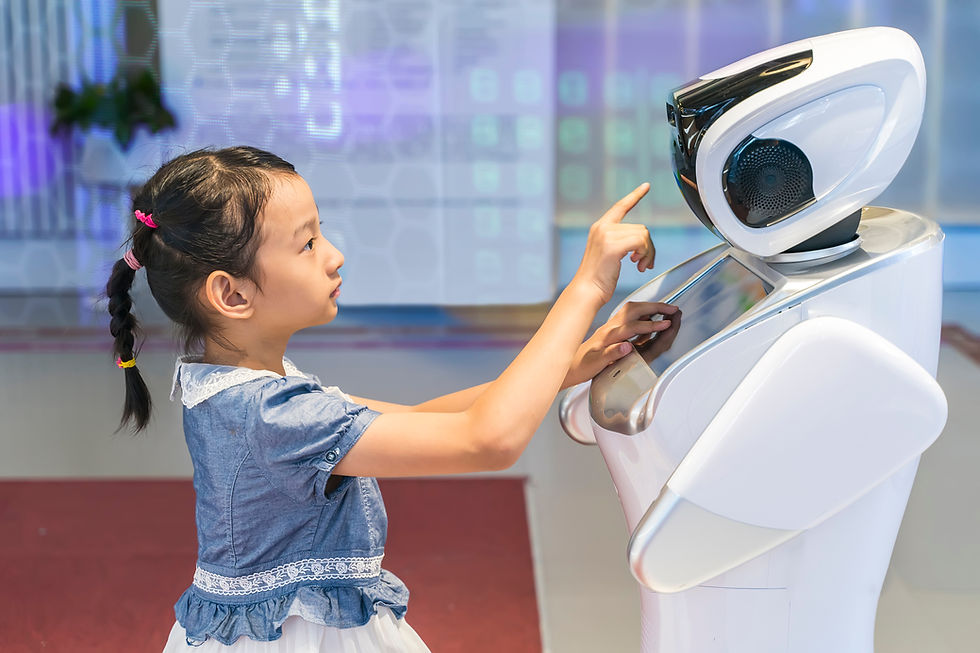Tackling the Challenges of Machine Learning's Alignment Problem
- vazquezgz
- Mar 17, 2024
- 3 min read

In the realm of artificial intelligence (AI), the alignment problem stands as a pivotal challenge. At its core, the alignment problem addresses the issue of ensuring that AI systems' goals and behaviors are aligned with human values and intentions. In other words, it seeks to bridge the gap between what we want AI systems to do and what they actually do. This challenge is particularly pronounced in machine learning (ML) and natural language processing (NLP) domains where algorithms learn from vast amounts of data and interact with complex human language and behaviors.
Real-world examples vividly illustrate the alignment problem's significance. Consider the case of biased algorithms in predictive policing, where ML models trained on historical crime data perpetuate existing biases, leading to disproportionate targeting of certain demographics. Similarly, in NLP, language models like GPT-3 have demonstrated remarkable capabilities in generating human-like text but also exhibit biases and potentially harmful outputs when prompted with sensitive topics.
Several prominent figures have brought the alignment problem to the forefront of AI discourse. Notably, Stuart Russell, co-author of the influential book "Human Compatible" has extensively discussed the importance of aligning AI with human values to ensure beneficial outcomes. Additionally, researchers like Nick Bostrom and Eliezer Yudkowsky have contributed foundational work on AI safety and alignment.
Nick Bostrom, a philosopher at the University of Oxford, gained significant recognition for his seminal work "Superintelligence: Paths, Dangers, Strategies." In this book, Bostrom explores the potential risks associated with the development of superintelligent AI systems and emphasizes the importance of aligning AI goals with human values to prevent catastrophic outcomes. His work has been instrumental in raising awareness about the long-term implications of AI and stimulating discussions on AI alignment within both academic and industry circles.
On the other hand, Eliezer Yudkowsky, a research fellow at the Machine Intelligence Research Institute (MIRI), has contributed extensively to the field of AI alignment through his writings and research. Yudkowsky's work often focuses on the concept of Friendly AI, which advocates for the development of AI systems that not only align with human values but also possess a deep understanding of those values to autonomously make decisions that benefit humanity. His approach emphasizes the need for rigorous technical solutions to ensure AI alignment, often delving into topics such as decision theory and cognitive biases.
While both Bostrom and Yudkowsky share a common concern for the alignment problem and the potential risks posed by advanced AI systems, they do differ in their perspectives and approaches. Bostrom's work tends to emphasize the broader societal and existential risks associated with AI, urging policymakers and researchers to prioritize safety measures. Meanwhile, Yudkowsky's focus on technical solutions and the concept of Friendly AI reflects a more proactive approach to addressing alignment challenges.
Despite these differences, both Bostrom and Yudkowsky have played pivotal roles in shaping the discourse surrounding AI safety and alignment, highlighting the multifaceted nature of the alignment problem and the need for interdisciplinary collaboration to develop robust solutions. Their contributions serve as guiding lights for researchers and policymakers navigating the complex landscape of AI ethics and safety.
To tackle the alignment problem, researchers have proposed various models and frameworks aimed at incorporating human values into AI systems' objectives. Approaches such as inverse reinforcement learning, cooperative inverse reinforcement learning, and value alignment seek to align AI behavior with human preferences. Initiatives like the AI Alignment Podcast and organizations like the Machine Intelligence Research Institute (MIRI) foster discussions and research dedicated to understanding and mitigating alignment risks.
In conclusion, the alignment problem poses a critical challenge in AI, ML, and NLP development, necessitating interdisciplinary efforts to ensure AI systems' behavior aligns with human values and intentions. While the road ahead may be fraught with complexities, ongoing research and collaborative endeavors within the machine learning community offer hope for achieving ethical and beneficial AI outcomes. By addressing the alignment problem head-on, we can pave the way for a future where AI technologies serve as empowering tools for humanity.
So, what do you think the alignment problem will be solved and humanity will take great advantage of AI and machine learning or on the contrary will be playing a role in destructive AI such as military applications and out of control AI? Please let us you answer in the poll below, many thanks and if you like this post subscribe.
Do you think the alignment problem can be solved?
Yes
No
No sure
Comments